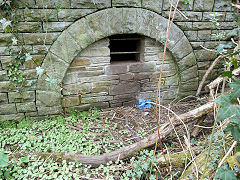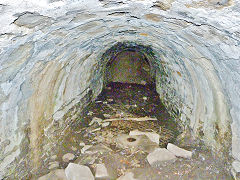Rudry and Waterloo
Iron, Coal, Bricks and Tinplate
Rudry Ironworks - ST 1961 8828
Rudry Ironworks, shown on OS maps as Ty'n-y-coedcae Blast Furnace, was started by Christopher Pope of the 'Rudry Iron Co' in 1828. The furnace had a short life and ceased work in 1834. Pope, who controlled most of Bristol's brass industry at the time, was declared bankrupt in 1831 and the ironworks, including "3 levels with 8 mines, 3 pits and 1 patch", auctioned off. His assignees attempted to work the furnace for a few more years, then the blast engine and other materials were salvaged and the buildings were abandoned. The furnace was of a typical early 19th century design, a free-standing tapered square tower constructed of local pennant sandstone, with four arches, that furthest away the tymp arch for tapping the iron and slag, and three for the admittance of the cold air-blast pipes. By the 1930's, all structures had been demolished.The photo shows Rudry Furnace from the top of the charging bank. The remains have been covered and cannot be viewed, but have been listed as an Ancient Monument.
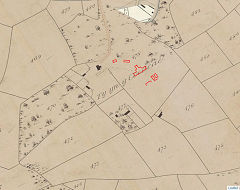
Rudry Ironworks, 1843
|
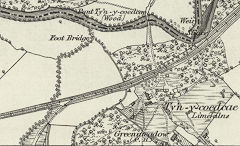
Rudry Ironworks, 1875
|
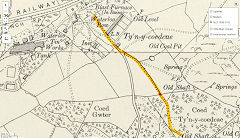
Rudry Ironworks, 1898
|
|
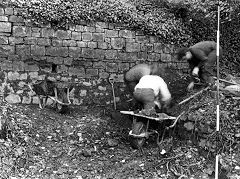
Rudry Ironworks, 1973
|
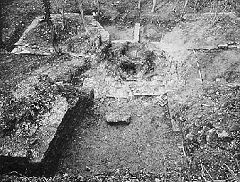
Rudry Ironworks, 1973
|
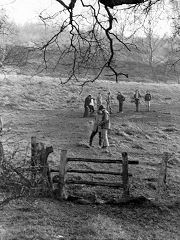
Ironworks tramroad, 1973
|
|
Mynydd-y-bwlch tramroad - ST 1875 8795
I'd long suspected that a raised path to the South was a tramway and suddenly stone sleepers have appeared. It ran from coal (possibly ironstone) outcroppings and an old shaft on the higher ground at mynydd-y-Bwlch, past the block of limekilns to Rudry Ironworks. It is said that it then crossed the river to connect with the Rumney Railway at Graig-y-Rhacca.
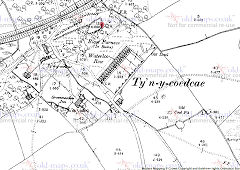
Mynydd-y-bwlch tramroad. 1900
|
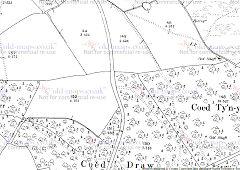
Mynydd-y-bwlch tramroad. 1900
|
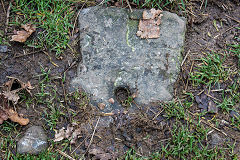
Mynydd-y-bwlch tramroad
|
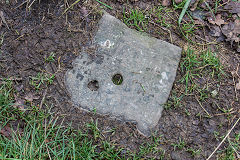
Mynydd-y-bwlch tramroad
|
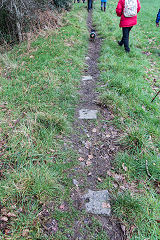
Mynydd-y-bwlch tramroad
|
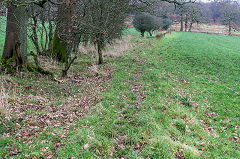
Mynydd-y-bwlch tramroad
|
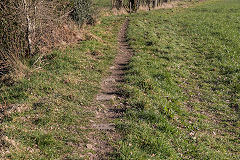
Mynydd-y-bwlch tramroad
|

Mynydd-y-bwlch tramroad
|
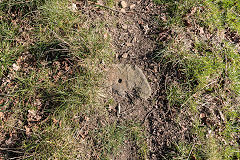
Mynydd-y-bwlch tramroad
|
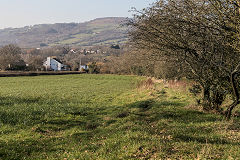
Mynydd-y-bwlch tramroad
|
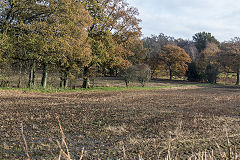
Mynydd-y-bwlch tramroad
|
|

Mynydd-y-bwlch workings
|
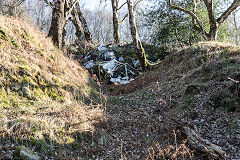
Mynydd-y-bwlch workings
|
|
|
Waterloo Tinplate works - ST 1924 8807
The Waterloo Tinplate Works was opened c1875 by 'Waterloo Iron & Tinplate Co' with one mill. It passed to Capt. P S Phillips in 1886 who went bankrupt in 1895 when the works was for sale. It was taken over by Richard Thomas becoming the 'Waterloo Tinplate Co Ltd' until it amalgamated with Partridge Jones & John Paton Ltd in 1920. The works was rebuilt or modernised in 1903, having by now four mills that were converted to electricity in 1922. The tinplate works closed by 1942 and was then used as a Naval storage depot and is marked 'disused' on the 1948 map. Rail traffic had ceased by 1952 and the machinery was dismantled in 1954 leaving the shells of the buildings. The nearby Waterloo Row was built at Ty'n-y-coedcae in 1891 for the tinplate workers. Some ruined buildings in the woods behind the reservoir are the last remains of the works. In the 1970s I can remember there being a large 'roofless?' building with the giant foundations of missing machinery.
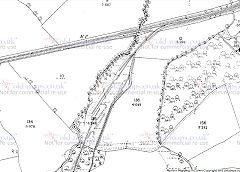
Waterloo Tinplate Works, 1875
|

Waterloo Tinplate Works, 1900
|
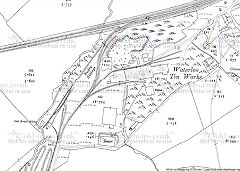
Waterloo Tinplate Works, 1920
|
|
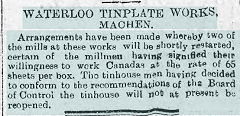
Tinplate Works announcement
|
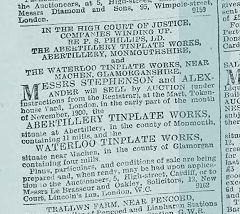
Tinplate Works auction notice
|
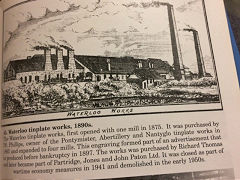
Tinplate Works in the 1890s
|
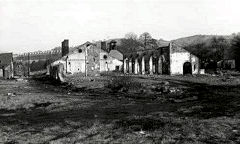
Waterloo Tinplate Works, 1952
|
This is the main stone-built building, the original works complex, along with many odd walls and pillars.
|
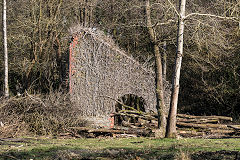
Waterloo Tinplate Works
|

Waterloo Tinplate Works
|
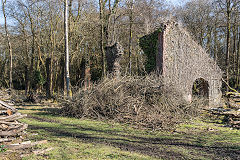
Waterloo Tinplate Works
|
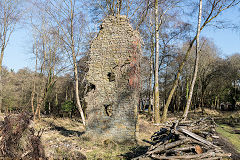
Waterloo Tinplate Works
|
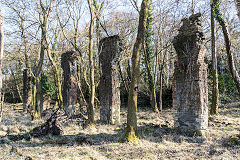
Waterloo Tinplate Works
|
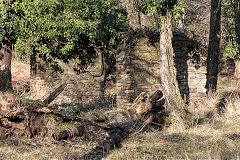
Waterloo Tinplate Works
|
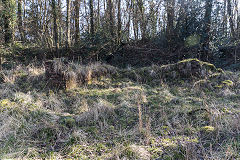
Waterloo Tinplate Works
|
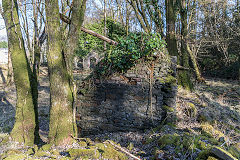
Waterloo Tinplate Works
|
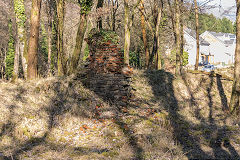
Waterloo Tinplate Works
|
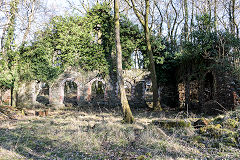
Waterloo Tinplate Works
|
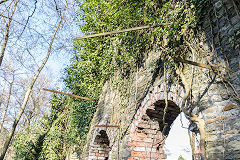
Waterloo Tinplate Works
|
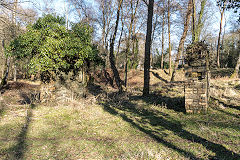
Waterloo Tinplate Works
|

Waterloo Tinplate Works
|
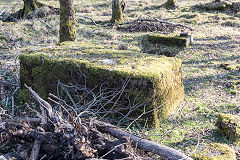
Waterloo Tinplate Works
|
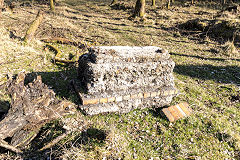
Waterloo Tinplate Works
|
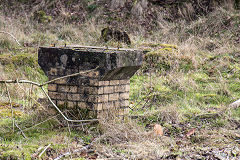
Waterloo Tinplate Works
|
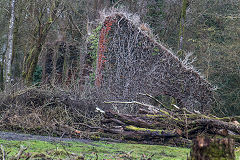
Waterloo Tinplate Works
|
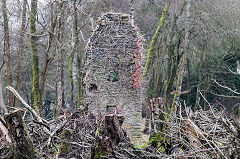
Waterloo Tinplate Works
|
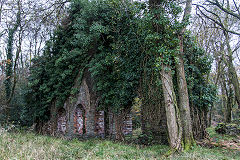
Waterloo Tinplate Works
|
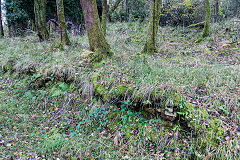
Waterloo Tinplate Works
|
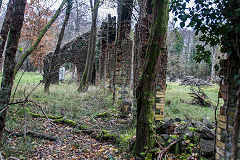
Waterloo Tinplate Works
|
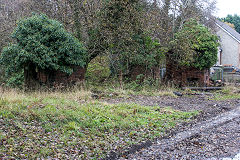
Waterloo Tinplate Works
|
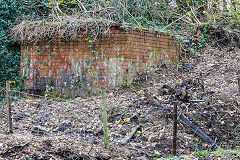
Waterloo Tinplate Works
|
Behind the main buildings of the original tinplate works is this smaller brick-built building, built after 1920.
|
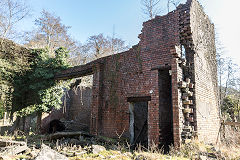
Waterloo Tinplate Works
|

Waterloo Tinplate Works
|
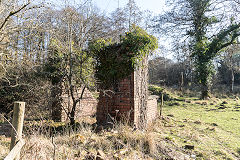
Waterloo Tinplate Works
|
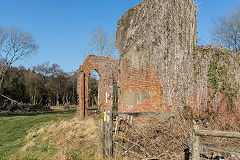
Waterloo Tinplate Works
|
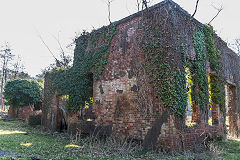
Waterloo Tinplate Works
|
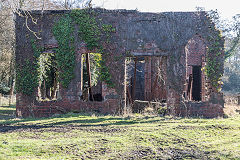
Waterloo Tinplate Works
|
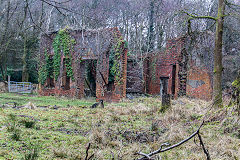
Waterloo Tinplate Works
|

Waterloo Tinplate works buildings
|
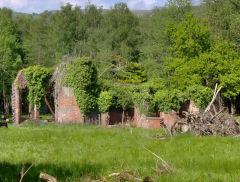
Waterloo Tinplate works buildings
|
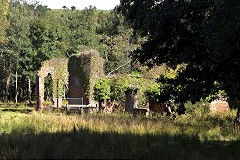
Waterloo Tinplate works buildings
|
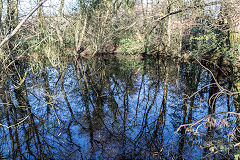
Waterloo works feeder pond
|
A complex of sidings led off the lower Brecon & Merthyr Railway branch to Caerphilly
|
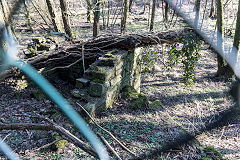
Waterloo Tinplate Works sidings
|
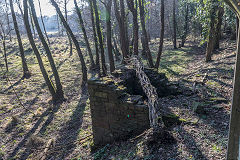
Waterloo Tinplate Works sidings
|

Waterloo Tinplate Works culvert
|

Waterloo Tinplate Works culvert
|
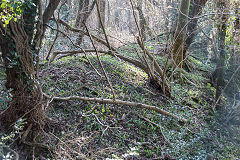
Waterloo Tinplate Works sidings
|
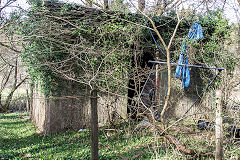
Waterloo Tinplate Works sidings
|
|
Garth Rudry Brick Kilns - ST 1910 8800
On the 1915 OS map 'Old Brick Kilns' are shown here. Earlier maps show the left-hand building without a label but not the right-hand building. The foundations of the left-hand building exist and on the right are what appears to be an engine base and a kiln. The engine base consists of two parallel walls c3ft apart along with substantial holding down bolts to one side. The kiln has an arched entrance and a circular flue c2ft on top. None of the bricks have any imprint.
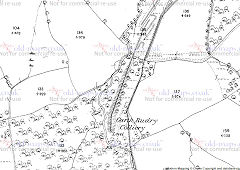
Garth Rudry Colliery, 1875
|

Garth Rudry Brick Kilns, 1915
|
|
|
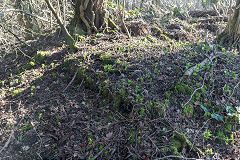
Garth Rudry square building
|
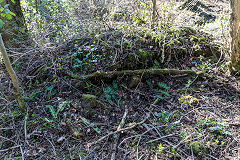
Garth Rudry square building
|
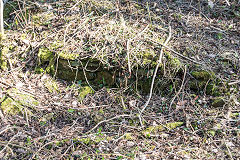
Garth Rudry square building
|
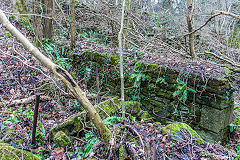
Garth Rudry engine base
|
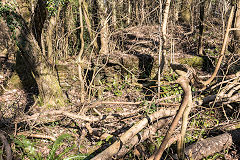
Garth Rudry engine base
|
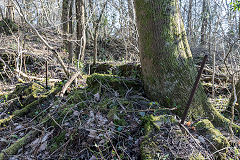
Garth Rudry engine base
|
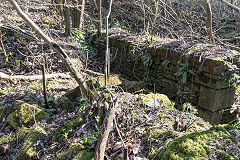
Garth Rudry engine base
|
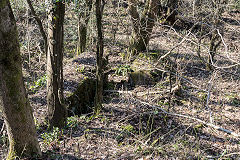
Garth Rudry engine base
|
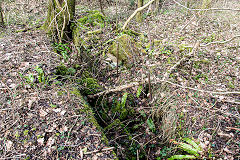
Garth Rudry engine base
|
|

Garth Rudry Brick Kiln
|
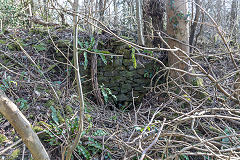
Garth Rudry Brick Kiln
|

Garth Rudry Brick Kiln
|
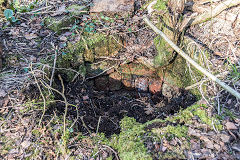
Garth Rudry Brick Kiln
|

Garth Rudry Brick Kiln
|
|
Garth Rudry Colliery - ST 1906 8781
Past the tinplate works, behind the spoil tips, is the very marshy site of Garth Rudry Colliery, believed to have been opened around 1872 by Price, Bradbury & Co, passing to Nicholas & Johnson as the Rudry Merthyr Colliery Co. They went bankrupt in 1895 and the Rock Vein Colliery Co took over in 1900 untl c1905 when it too was liquidated. It may have re-worked in the late 1920s.

Garth Rudry Colliery tips
|
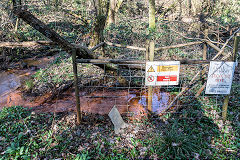
Garth Rudry Colliery
|
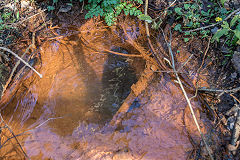
Garth Rudry Colliery
|
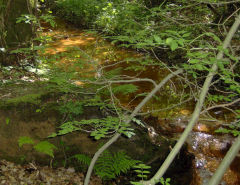
Garth Rudry Colliery
|

Garth Rudry Colliery
|
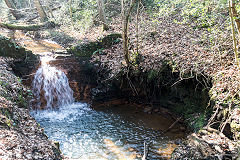
Garth Rudry Colliery
|
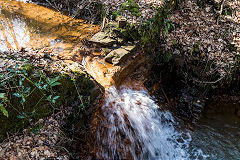
Garth Rudry Colliery
|
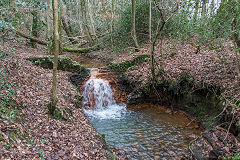
Garth Rudry Colliery
|
Rudry Colliery and Brickworks Tramway - ST 1916 8763
Sidings from the GWR (B&MR) serviced Waterloo Tinplate Works and from there a tramway or siding ran up the valley to the brickworks. From 1875 to 1900 the OS maps appear to show a direct connection but by 1915 it is clearly separate.
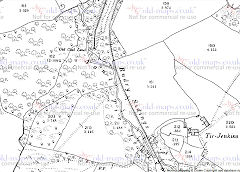
Rudry Sidings, 1900
|
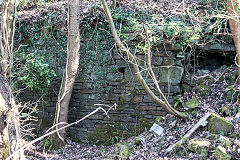
Rudry Colliery loading bank
|
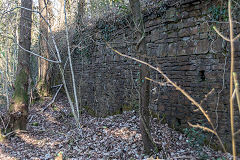
Rudry Colliery loading bank
|
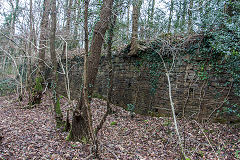
Rudry Colliery loading bank
|
The footbridge takes a footpath from the trackbed of the tramway up to Garth Place.
Just downstream are the remains of a low weir and a pipeline from it running towards Waterloo.
|
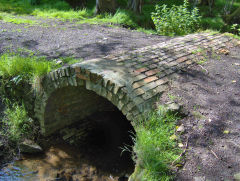
Footbridge to Garth Place
|
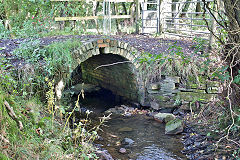
Footbridge to Garth Place
|
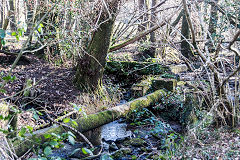
Rudry Colliery tramway pipeline
|
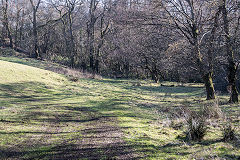
The trackbed looking South
|
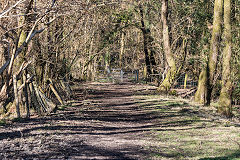
The trackbed looking North
|
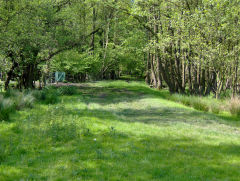
The trackbed looking North
|
|
A bridge over a stream above the footbridge. If the rails are actual running rails, which I rather doubt, the gauge is only about 12 inches.
|
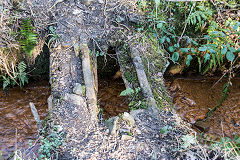
Rudry tramway bridge
|
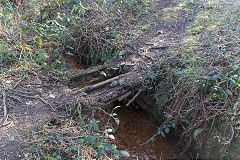
Rudry tramway bridge
|

Rudry tramway bridge
|
This is a culvert or drainage level coming from the Ty'r Jenkins direction, possibly the Little Red Ash level of 1908-1913.
The tramway probably ran over the top of it at one time but the soil has washed away.
|
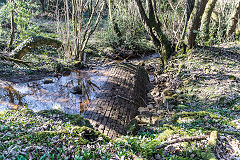
Rudry tramway drainage level
|
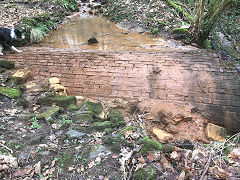
Rudry tramway drainage level
|
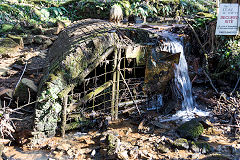
Rudry tramway drainage level
|
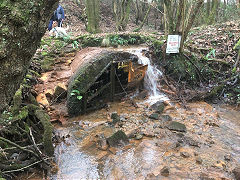
Rudry tramway drainage level
|
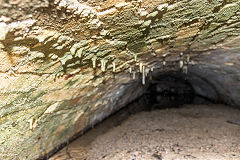
Rudry tramway drainage level
|
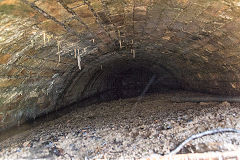
Rudry tramway drainage level
|

Rudry tramway drainage level
|
A little further along on the Eastern side of the tramway is a wall close to where the Little Red Ash level of 1908-1913 would have wanted to load their output into wagons (if they had any !!)
|
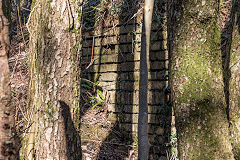
Rudry tramway loading bank
|
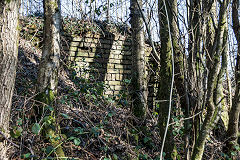
Rudry tramway loading bank
|
|
Further on again, there is a double-walled building very typical of the construction of a magazine. A siding is shown going to it on the 1900 map.
|
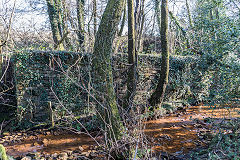
Rudry tramway magazine
|
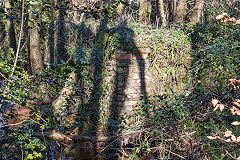
Rudry tramway magazine
|
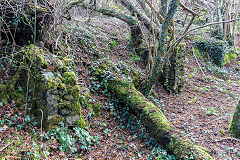
Rudry tramway magazine
|
Rudry Brickworks - ST 1931 8728
The tramway continues up to the brickworks site of which nothing remains today. Rudry Colliery and probably the brickworks were opened in the 1860s and owned by Nicholas and Johnson by 1878. By 1895 the 'Rudry Merthyr Steam and House Coal Colliery and Fire Brick Co Ltd' was in receivership but the company was still managed by A Johnson. The colliery and brickworks appear to have closed about 1899 but the colliery was re-opened on and off until the 1930s. Nicholas and Johnson also owned Risca Brickworks at the Darren until the early 1890s.
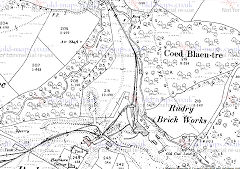
Rudry Brickworks, 1900
|
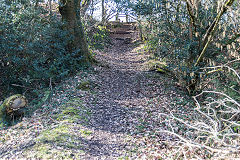
Rudry Brickworks incline
|
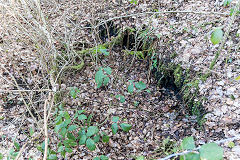
Rudry Brickworks level
|
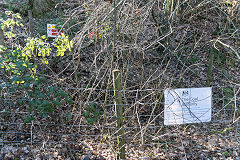
Rudry Brickworks level
|
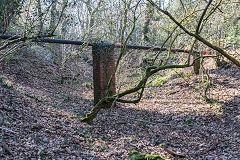
Rudry Brickworks pipeline
|
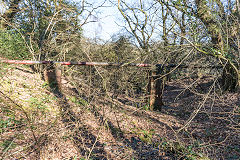
Rudry Brickworks pipeline
|
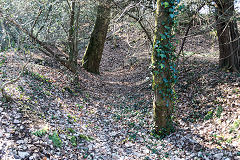
Rudry Brickworks level
|
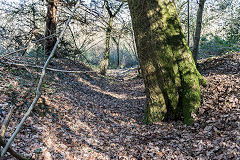
Rudry Brickworks level
|
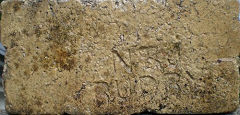
'N&J Rudry'
|
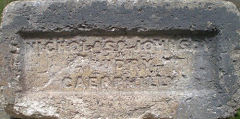
'Nicholas & Johnson Rudry Caerphilly'
|
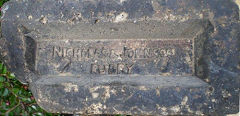
'Nicholas & Johnson Rudry'
|
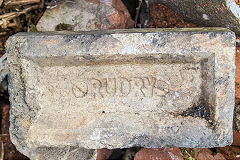
'Rudry' type 2
|
Rudry Merthyr Colliery - ST 1931 8728
Rudry Colliery was opened in the 1860s and owned by Nicholas and Johnson by 1878. By 1895 the Rudry Merthyr Steam and House Coal Colliery and Fire Brick Co Ltd was in receivership but the company was still managed by A Johnson. The colliery and brickworks appear to have closed about 1899 but the colliery was re-opened on and off until the 1930s.
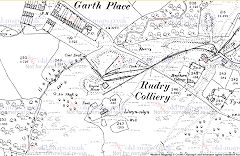
Rudry Merthyr Colliery, 1900
|
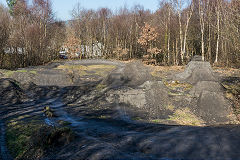
Rudry Merthyr Colliery tips
|
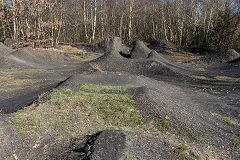
Rudry Merthyr Colliery tips
|
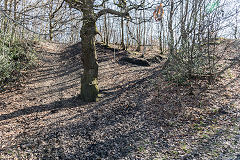
Rudry Merthyr Colliery tips
|
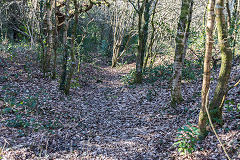
Rudry Merthyr Colliery tramway
|
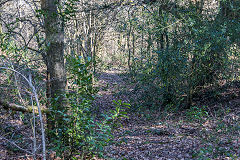
Rudry Merthyr Colliery tramway
|
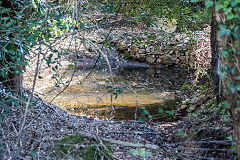
Rudry Merthyr Colliery 'tank'
|
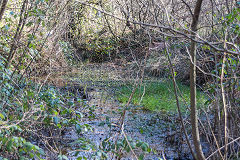
Rudry Merthyr Colliery 'tank'
|
East of Rudry
Coed Draw iron mine - ST 1970 8775
Coed Draw iron mine was either side of the lane, The shaft on the South side and the tips on the North. It was 'disused' on the 1875 map and probably served the Rudry Ironworks.
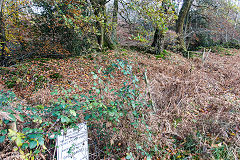
Coed Draw iron mine
|
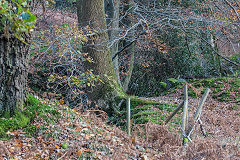
Coed Draw iron mine
|
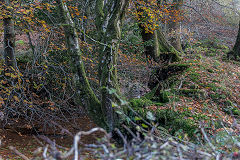
Coed Draw iron mine
|
|
Copi Gwynthi and Cwrt-y-llaca - ST 2046 8727
Copi Gwynthi woods to the East of Rudry Brickworks are an area of old coal workings but scantly recorded on maps, leading to a quarry at Cwrt-y-llaca that was 'old' in 1898 and roughly filled in.
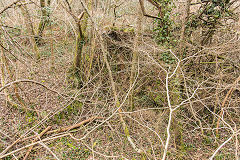
Copi Gwynthi workings
|
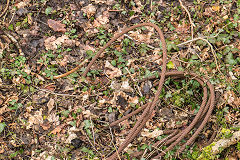
Copi Gwynthi hawser
|

Copi Gwynthi shaft
|
|
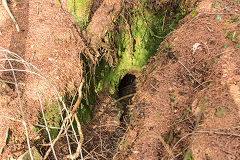
Cwrt-y-Llaca shaft
|
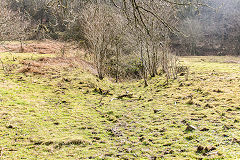
Cwrt-y-Llaca quarry
|
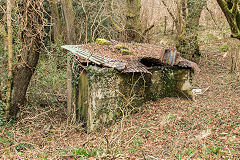
Cwrt-y-llaca wellhouse
|
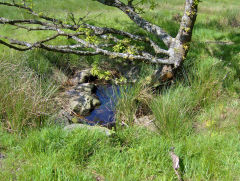
Shaft on Rudry Common
|
Mynydd-y-bwlch levels - ST 2012 8772
The Mynydd-y-bwlch levels were old in 1875 and sporadically worked until the 1950s. The area was covered in old shafts, trial pits and levels but has been thoroughly landscaped.
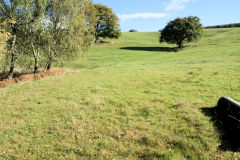
Mynydd-y-bwlch levels
|
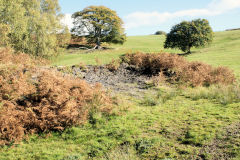
Mynydd-y-bwlch levels
|
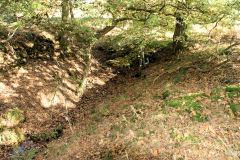
Mynydd-y-bwlch levels
|
Pentwyn Colliery - ST 2039 8810
Pentwyn Colliery was working from 1875 to around 1923, latterly owned by the Ashburnham Steamship Co. The site has been roughly cleared, possibly by the landowner or to extract shale to build Llanwern Steelworks. The colliery and engine house were beside the small lake and there were many other shafts and pits in the area just behind it. The incline from the colliery crosses the lane at ST 2033 8815 on solid stone abutments and is prominent running down the hillside to sidings at the site of New Pit at ST 2008 8874 on the Machen Forge branch. (very marshy, virtually a pond, I haven't got big enough wellies to explore this area yet)
Stephen Parry recalls "I spent my first five years in Woodland Cottage, which is in the fields just below there and often went to walk over that area around the pond which used to be there. I remember my uncle (Lesley Halbrock) working in the drift mine that was there; a mine owned (if I remember correctly) by Mr Bracey from Waterloo. You also had a picture of the remains of the bridge below that mine. That bridge was blown up by my Grandfather, Edward Nash, when it became unsafe. Grandshire was the Fire man at Bedwas Colliery and so used to explosives. Grandshire had started work as a 13 year old boy in the Big Pit in Blaenafon; the pit in which his father (William Pitt Nash) had died in the first fatal accident in 1889."
Garn level - ST 2059 8777
The Garn level had two periods of working, from 1920 to 1923 by the Ashburnham Steamship Co, then in the 1950s to 1964. The 1965 OS map shows a very interesting small mine operation with tramways, engine houses, shafts and adits. Sadly the whole area has been landscaped leaving just some flat and broken areas, possibly following shale extraction for the building of Llanwern steelworks. Would have loved to have seen this working....
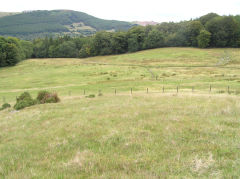
Pentwyn Colliery and Garn level
|
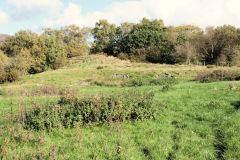
Pentwyn Colliery site
|
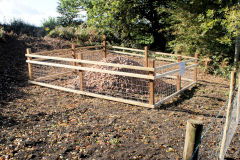
Pentwyn Colliery incline
|
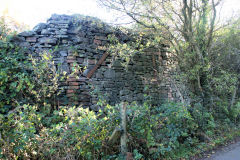
Pentwyn Colliery incline
|
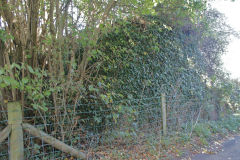
Pentwyn Colliery bridge abutments
|

Pentwyn Colliery bridge abutments
|
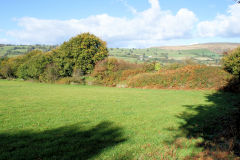
Pentwyn Colliery airshaft
|
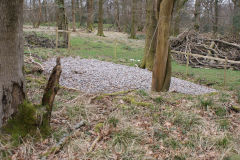
Pentwyn Colliery trial pits
|
West of Rudry
Craig-y-Llan limekiln - ST 1976 8639
Craig-y-Llan airshaft - ST 1922 8622
To the South of Rudry lie Craig-y-llan and Coed Cefn-Onn. First, a very decrepid pair of limekilns lie beside the steep footpath from the 'Maen Llwyd' with a small quarry below them. Further West along the ridge footpath is a collapsed airshaft, possibly from the Rudry iron mines.
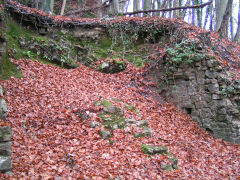
Craig-y-llan lime kilns, 2008
|
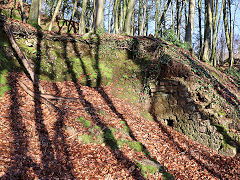
Craig-y-llan lime kilns, 2025
|
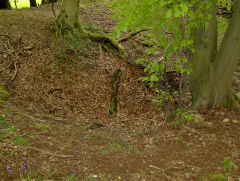
Coed Cefn Onn leadmine shaft
|
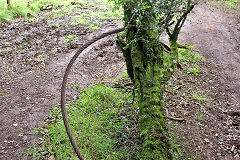
Cefn-Onn Quarry ropeway cable
|
Coedcae Garw Farmhouse - ST 1928 8615
Down the hillside from the airshaft is Coedcae Garw, a ruined farm or smallholding.
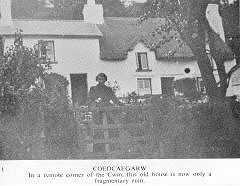
Coedcae Garw Farm
|
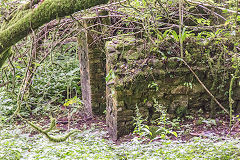
Coedcae Garw Farm
|
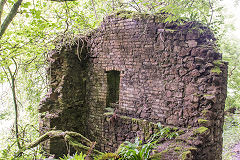
Coedcae Garw Farm
|

Coedcae Garw Farm
|
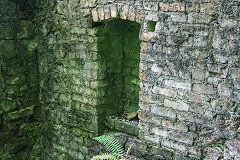
Coedcae Garw Farm
|
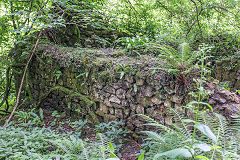
Coedcae Garw Farm
|
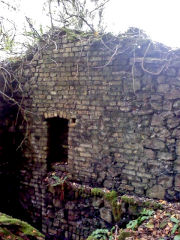
Coedcae Garw Farm
|
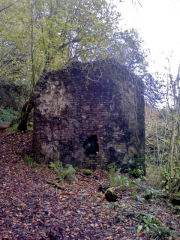
Coedcae Garw Farm
|
World War 2 resistance bunker - ST 1985 8645
Further along Craig-y-llan is a small World War 2 resistance bunker just off the main ridge trackway. It was probably designed for special duties wireless operators. The entrance shaft is made from hollow concrete blacks and leads to a small entrance room disguises as a poachers den. Behind it was a larger room, both rooms with brick walls and a corrugated iron roof.
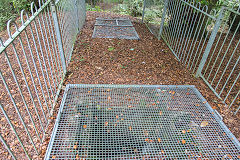
Craig-y-llan WW2 bunker
|
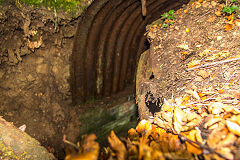
Craig-y-llan WW2 bunker
|
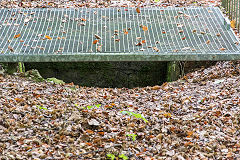
Craig-y-llan WW2 bunker
|
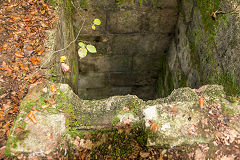
Craig-y-llan WW2 bunker
|
Parc-y-Van Limekilns - ST 1779 8615
These limekilns were built in the 1840s by John Edmunds , with the two left-hand draw holes around one oval kiln and a single kiln and draw hole on the right.
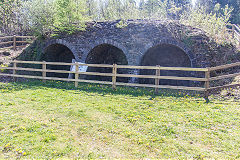
Parc-y-Van limekilns
|
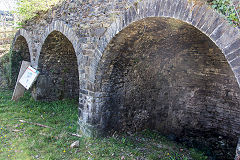
Parc-y-Van limekilns
|
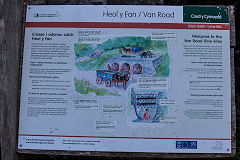
Parc-y-Van limekilns
|
|


